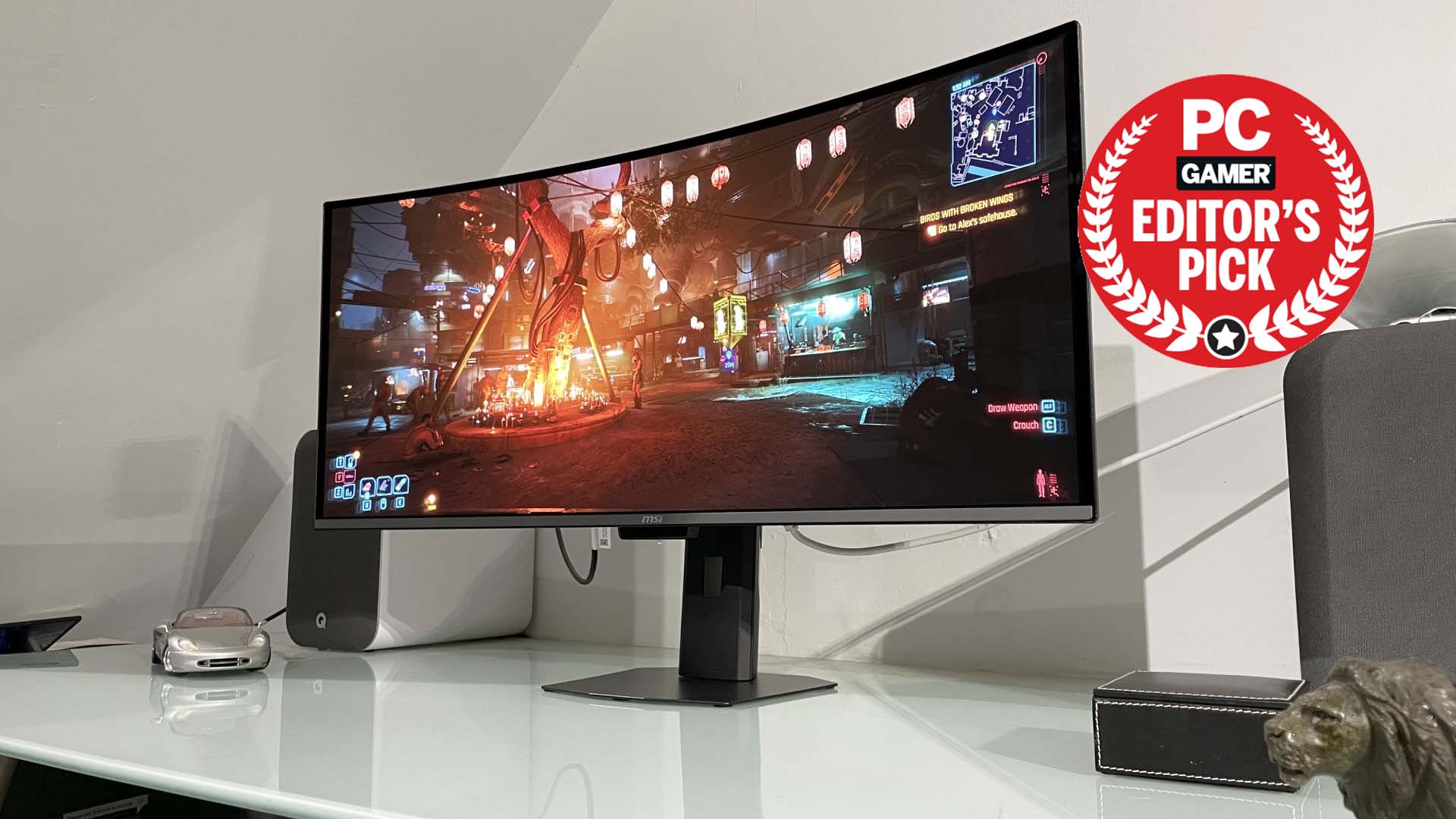Halo Infinite's terrible, horrible, no good, very bad year
Halo Infinite missed its moment. Can it claw its way back?
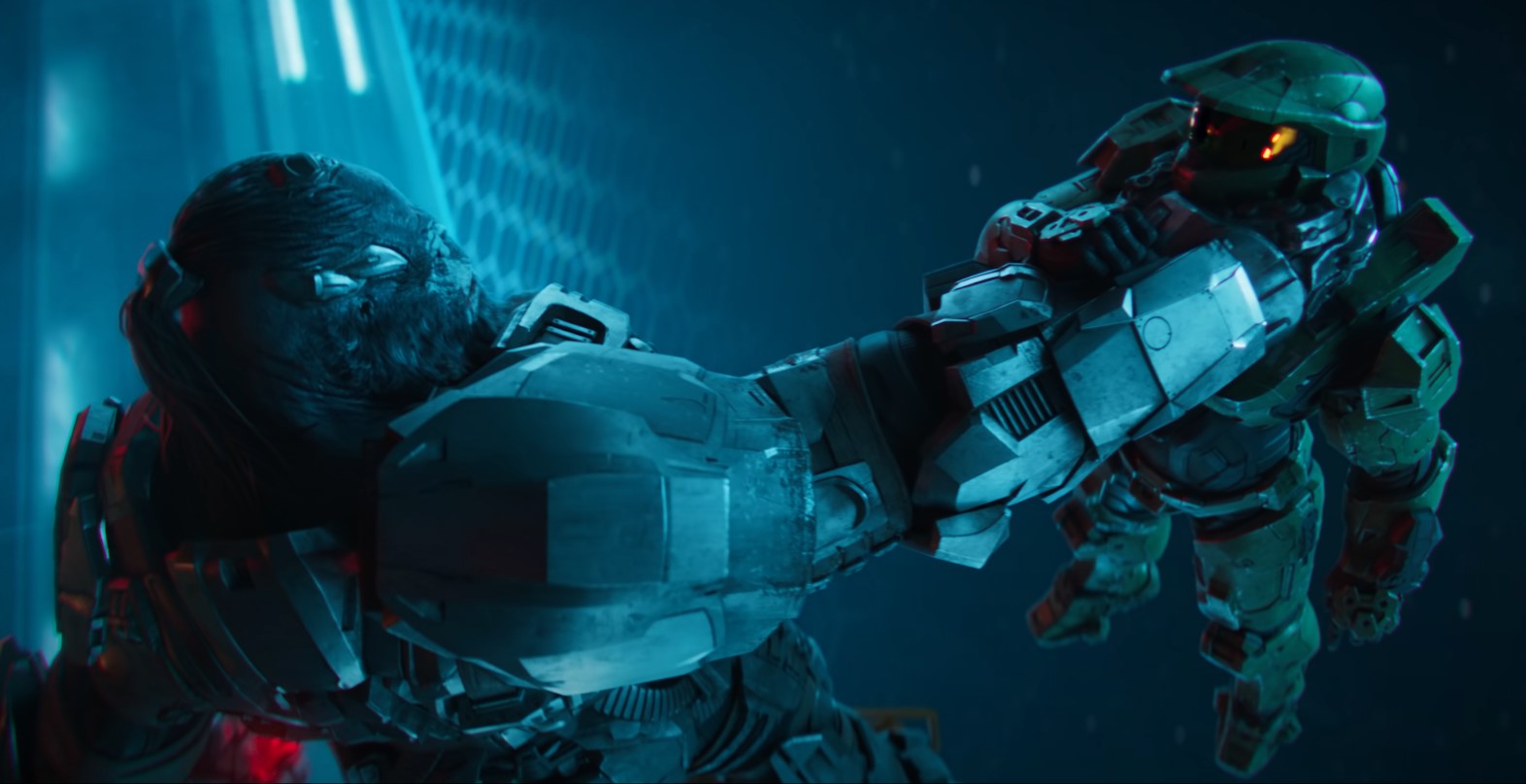
For the first time since December 2021, I played Halo Infinite last week—and somehow, despite loving and playing Halo on-and-off for 20 years, I was still shocked by how much fun I had. The springy movement, the rhythm of shield-stripping body shots followed by a snappy magnum round to the head, the zippy sci-fi slide whistle sound effects for every little action, the *chef's kiss* sensation of hooking a frag grenade around a corner just right. Infinite is truly the best Halo has ever felt under my fingertips, a Jurassic Park-worthy refinement of decades-old FPS DNA. But I guess reviving the dinosaur wasn't really the problem for Jurassic Park or Halo Infinite—it was knowing what to do with it once it was alive.
First impressions last year were glowing. Halo players new and old almost universally loved the new multiplayer in its beta tests, a balance developer 343 has been chasing since 2012's Halo 4. Infinite nailed it in a way I honestly didn't believe was possible. The first blow to that enthusiasm came in August 2021, months before the game was even out. It would end up taking a full year for Infinite to pull out of its downward spiral.
Bad year, month 1 (November): Infinite launches without core Halo features
Halo Infinite's decline over 2022 was death by a thousand cuts and a couple gaping wounds.
In an August 2021 video update, 343 delivered the news that both campaign co-op and the Forge mapmaking mode would miss launch and arrive in 2022. The goal was for campaign co-op to arrive about three months later (reality: 12 months) and for Forge to ship in six months (reality: 12 months, in beta).
Nevertheless, the mood was still good when multiplayer surprise launched in November, on Halo: Combat Evolved's 20th anniversary. Infinite was just… fun! Halo was good again! It was relevant. It was… a flaming dumpster fire within a month.
So much went wrong with Infinite's multiplayer launch and its support throughout 2022, but the rot began here, with this decision to launch without Forge or campaign co-op. It was a practical, necessary decision to make it possible to release the game by the end of 2021, a date that was already one year later than planned. It was also wrong.
This choice set Infinite up to fail in two ways:
Keep up to date with the most important stories and the best deals, as picked by the PC Gamer team.
1. It magnified Infinite's missing features vs. the classic Halo games
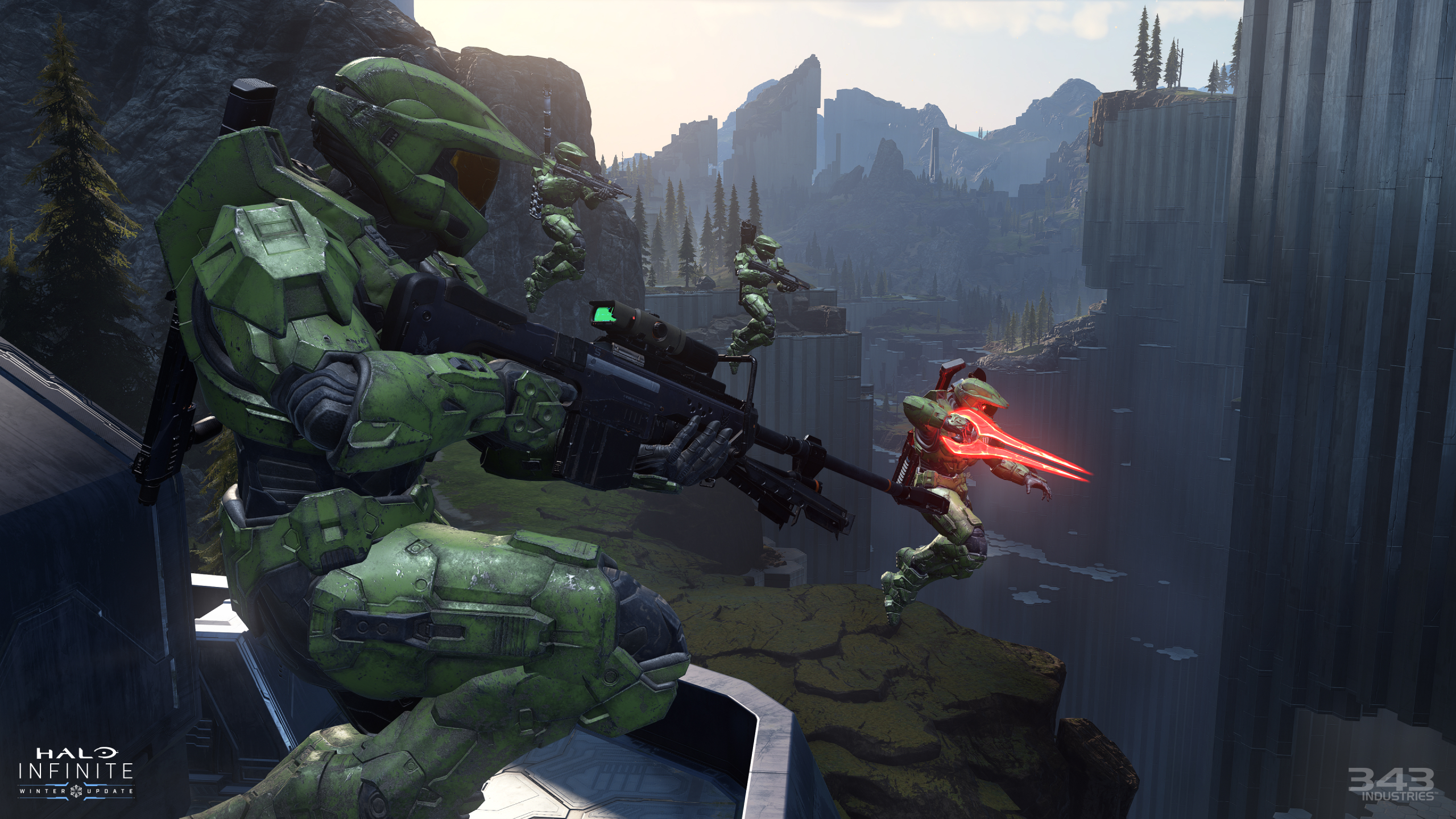
Every single Halo launched with co-op. Halo 3, Reach, and 4 all launched with Forge. After it seemed like 343 had finally nailed the essence of Halo's arena gunplay, not having these two core features was a bitter chaser.
There are reasonable justifications. Modern game development is expensive, in both people and time. Infinite's campaign was a series-first open world sandbox. Halo 3's Forge was vastly simpler; character models and maps and lighting were all far less detailed; the old games had to run on a single console, instead of across two consoles and PCs, with dedicated servers and a network system that can seamlessly interlink between Steam and the Xbox backend. There are doubtless far more insidious complexities to do with Halo Infinite's engine and design that I don't understand.
None of that matters, because that's not what players see or touch. What they see is a game missing things they've expected for a decade. Two decades. And when launch arrived, the lack of Forge and co-op formed the core of a snowball that picked up more and more criticisms of absent features, like:
- You couldn't replay campaign missions.
- There was no SWAT playlist, a perennial favorite and simple mode to implement.
- Thanks to the F2P progression and customization system, you could no longer pick a simple color for your Spartan the way you'd been able to do since 2001. As summarized by a player on Reddit: "You have to pay for the color blue."
- No way to earn most armor customization simply for playing.
2. MIA Forge exacerbated Infinite's greatest failing: the content drought throughout 2022
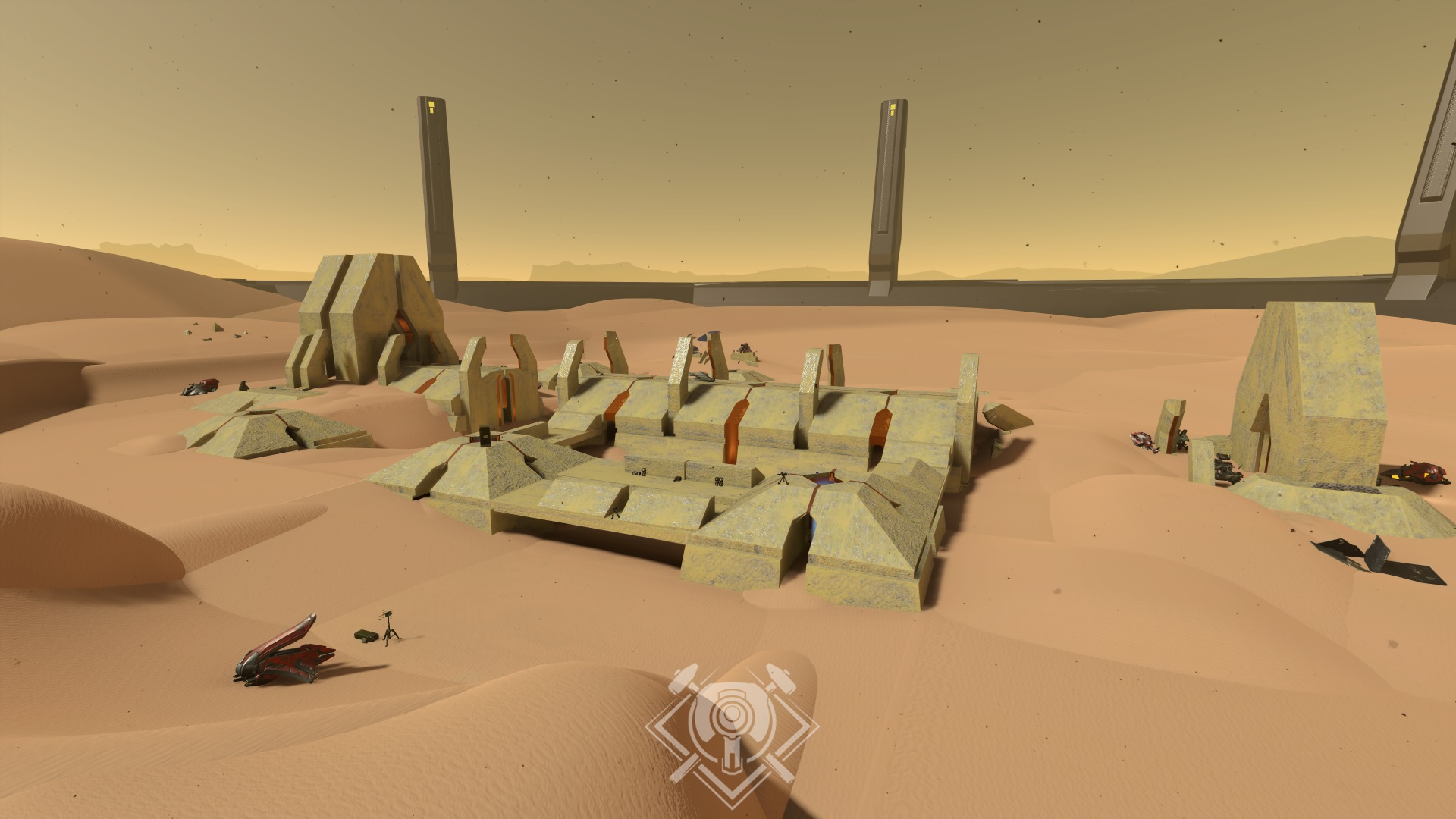
The above ignited the firestorm at launch, but Forge's absence did Infinite far more damage over time. It took six months for Infinite to get two new maps and game modes. A year in this remains Infinite's biggest problem, but the recent arrival of Forge has already proven to be what the game needed all along.
If Infinite had launched with Forge, 343 would've had its pick of community maps to highlight; even if only the best of the best made it into matchmaking, there'd have been a constant flow of new stuff to see. Instead, players logged in week after week to a dry riverbed.
Bad year, month 2 (December): Warning signs of the slow year ahead
By the time campaign landed in December (to overall quite positive reviews) the mood on the F2P multiplayer had turned venomous, based on a crappy battle pass, a narrow map selection and limited playlists. 343 announced that the first season would drag on six months, cementing the dread that Infinite's core multiplayer issues were a long, long way from being solved. The reality turned out to be worse than the fear.
Issues that players felt needed to be addressed immediately were clearly way down the roadmap. However complex they were from a development standpoint, they seemed frustratingly simple to players. For example, Infinite launched with a progression system based around daily and weekly challenges. But everyone hated them:
- Many required specific gametypes that players just had to hope to get into via matchmaking
- Others required using certain weapons or playing in a specific way, like a melee hit to the back
- Simply playing the game rewarded no XP until 343 hastily patched in challenges that rewarded playing your first few matches
- It took a year, until November 2022, for Infinite to reward match XP for playing and performing well on your team
The battle pass was littered with "challenge swaps" that let you replace one challenge with another, a band-aid for an obviously bad system. The trickle of armor you unlocked felt particularly meager. The season's first special event had its own free battle pass, which 343 had to alter because it, too, was loaded with challenge swaps and XP filler.
343's former head of design, Jerry Hook, talked openly about those issues in a December 15 livestream, but also said something that I think encapsulated Infinite's first painful year: "One of the biggest challenges we knew we'd have, no matter what we did, was that changing Halo's 20 years of boxed product models to a free-to-play model is not going to be inherently satisfying for most of our players. We get that. However, we don't think we have to continue to follow normal tropes of the industry to make that effective. We think we can do some things better for our players and better for the game experience, to push that edge a little bit. So we're taking a look at that across the board."
Other than Infinite's good idea to never have battle passes expire, its progression system and cosmetics seemed sparse compared to other F2P games, not innovative. While Halo players were grinding for shoulderpads, Fortnite was literally being turned upside down and adding Spider-Man. Fortnite is in a class of its own, but Infinite was meant to be Halo's grand comeback, the start of a "10 year platform" fueled by Microsoft's bottomless pockets and years of development time.
How did it take until launch to see how poorly it stacked up to other F2P games?
In hindsight, Infinite's 2020 delay set the wrong expectations
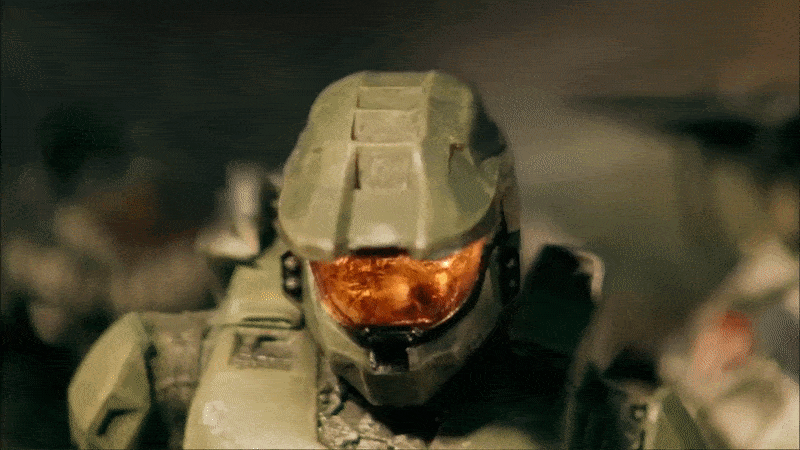
Microsoft and 343 Industries absolutely needed to delay Halo Infinite after its first poor showing at E3. It was originally meant to be out by the end of 2020, and an extra year of development time made many players think that Infinite would arrive robust, extra polished, with a bulked-out multiplayer and more maps lined up to debut at a rapid clip. What's the point of a live service game without constantly feeding grist into the content mill, right?
Yet the "10 year platform," which had seemingly gotten a generous extra year in the oven, looked thin even next to the older games in the series that promised no such longevity and launched into far less competitive multiplayer environments.
Halo multiplayer map history
Halo 2
- Launch day: 11 maps
- 5 months later: 2 free maps, 2 paid maps ($5), made free 2 months later
- 7 months later: 5 paid maps ($12), made free 2 months later
- 2 years, 6 months later: 2 paid maps ($4), made free 3 months later
Halo 3
- Launch day: 11 maps, Forge
- 3 months later: 3 paid maps ($10), made free 3 months later
- 7 months later: 3 paid maps ($10), reduced price later
- 10 months later: 1 free map
- 1 year 7 months later: 3 new maps ($10), reduced price later
- 2 years later: 3 new maps ($10)
Halo Infinite
- Launch day: 10 maps (6 exclusive to Arena, 4 exclusive to Big Team)
- 6 months later: 2 new free maps
- 1 year later: 2 new free maps (built in Forge), Forge mode
- 1 year, 1 month later: 1 new free map (built in Forge)
One year in, Halo 2 had 20 maps. Halo 3 had 18 maps. Halo Infinite had 14, divided more strictly between game modes.
That was never going to go over well with longtime players or wow new ones.
Looking back, perhaps a radical degree of transparency about Infinite's fraught development, instead of repeating the upbeat mantra "this is just the beginning," could've set a different expectation: that it was a freaking miracle Infinite shipped in a playable state at all, and that 2022 would be a year defined by playing catch-up.
Bad year, month 3 (January): Big Team Battle woes
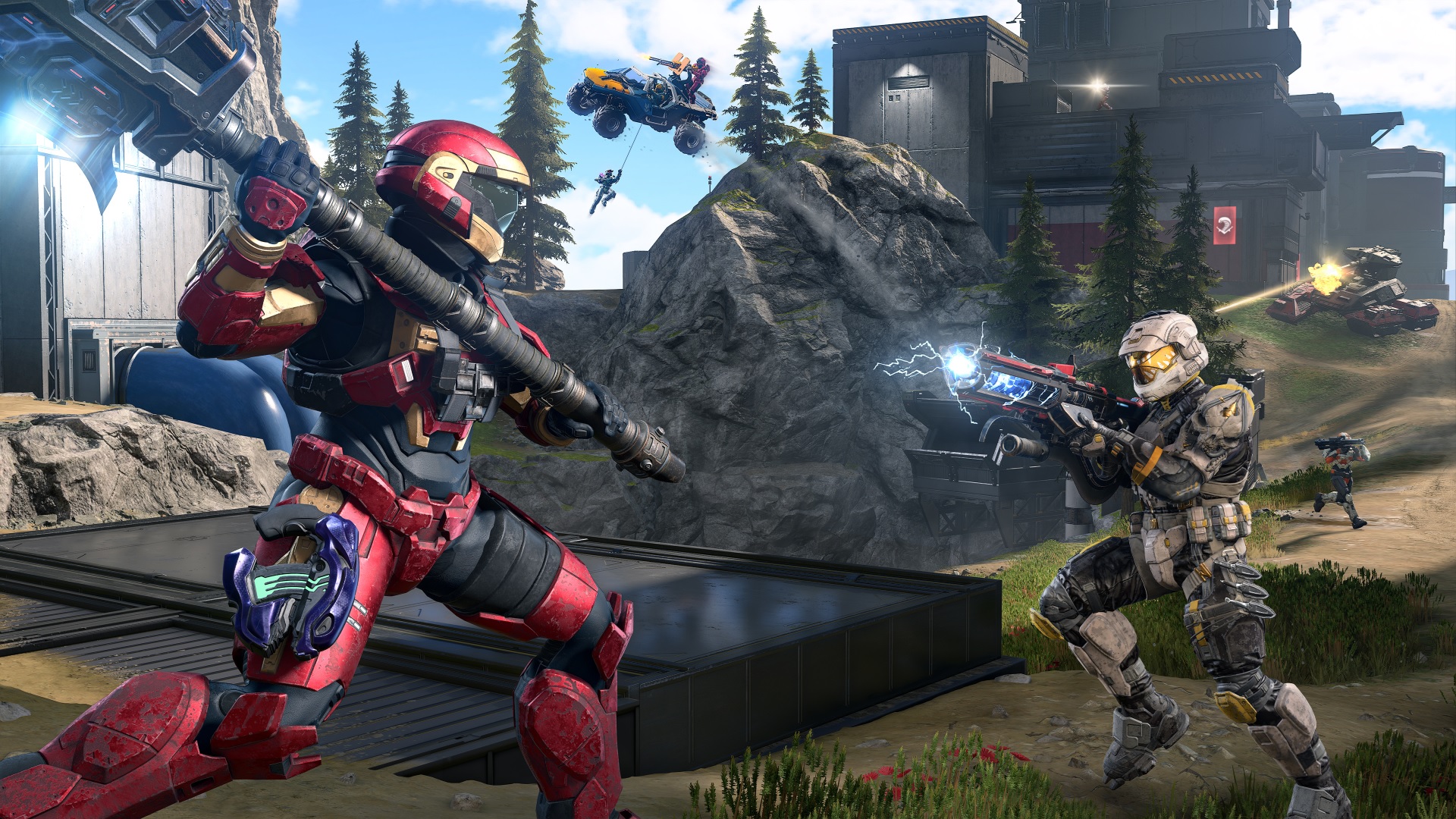
In December, it became clear that Infinite's Big Team Battle matchmaking was having serious issues, especially when trying to play with groups. Due to the holidays, it took until January 19 for a patch aimed to fix the issue. It did not succeed.
A limited time event introduces a new mode which is mostly well-received, but players remain frustrated by the challenge system used for progression.
Bad year, month 4 (March): Quiet period
Big Team Battle matchmaking is finally fixed.
In a post on Halo Waypoint, 343 writes that its priorities are addressing issues, completing season 2, and working on co-op, Forge and season 3 while also balancing "team health, with an emphasis on getting ourselves into a sustainable development rhythm so that we can deliver great experiences to all of you while keeping a healthy work/life balance… Frankly, these last few months have been slower than we expected, and we sincerely thank you for your patience."
The post highlighted major issues still being worked on, including anti-cheat vulnerabilities and the progression system. The update breaks the news that campaign co-op will not be available at the start of season 2 in May, and that only two maps will be added in season 2.
Bad year, month 5 (April): Season 2 stretches to November
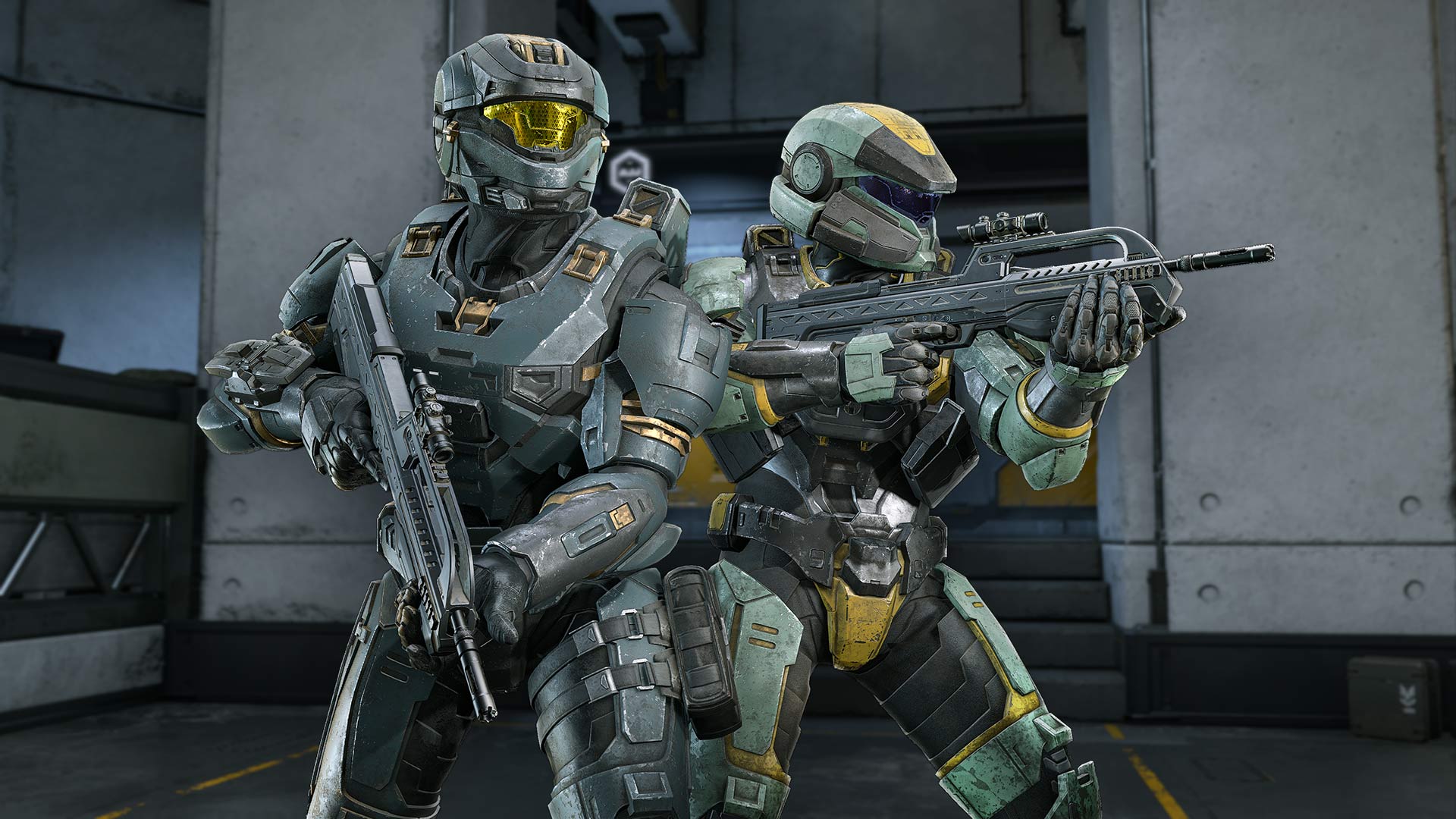
"We would all like to have more things happening at a faster pace," says Halo community lead Brian Jarrard on a livestream before the launch of season 2, which is turns out will also last for six months, instead of the expected three.
Here's something I don't think 343 gets enough respect for: they know they're going to get booed, and they get up on stage anyway. They put out lengthy blog posts and video updates about their goals and their shortcomings while the crowd pelts them with rotten cabbage and human shit. They're far more open than most development studios. Unfortunately, admitting that they're unhappy with the pace of updates internally can't mollify fans who don't understand why the updates take as long as they do, when other games seem more capable of meaty, rapid-fire additions.
Bad year, month 7 (June): Frustration mounts over lingering problems
343 consistently worked to fix technical issues Halo Infinite launched with, improving anti-cheat, smoothing out incorrect animations, rebalancing the sound mix, squashing bugs and crashes. This work does not alter player perception that Infinite remains flawed in some key areas, including network performance impacting accurate shot registration. Dozens of threads about lag and "desync" dot Halo Waypoint and Reddit, intensifying over the summer.
A 343 post in late June says that it's high on the priority list, but explains that "the devs that would work on these fixes have been allocated to other Infinite work." Some of that work has indirectly helped desync issues, but not in the most important cases "around melee and 'around the wall' shots." It took 343 until the December 2022 update to specifically target these issues.
Bad year, month 10 (September): Local co-op gets cut, and an updated timeline does not go over well
In a community update video, Joseph Staten announces that splitscreen co-op is being scrapped. Digital Foundry gains access to an unfinished version of splitscreen co-op and found that it was actually quite playable, even on a 2013 Xbox One.
In the same update video, new head of live service Sean Baron strikes a nerve by saying that Halo's DNA is a "highly competitive game," which some players construe as prioritizing ranked/esports-esque competitive play over the sillier social side of Halo. This is, I think a bit unfairly, used as more ammunition for the argument that 343 is out of touch with its players.
Other things Baron says in the stream are candid and good to hear, like: "We want players to expect a smooth quality experience with very few technical issues, and we've really fallen down there, from a PC perspective. We can do better." But 343's objective of improving on all of its core pillars by the end of 2023 highlights how little seemed to get done in 2022. After months and months of the same refrain, it becomes increasingly hard to believe.
Forge is delayed two months from a planned release in September.
Bad year, month 12 (November): The update everyone was waiting for
The end of Halo Infinite's very bad year is, at long last, a very good month. On November 8, 343 launches online co-op and the ability to replay missions. I've played it, and it works as well as I'd hoped.
Forge mode launches (still in beta form, but solid) and immediately brings a sense of hope that the year-long content drought is over.
An overhauled progression system arrives, delivering XP just for playing Halo (what a concept). A free battle pass offers players a slew of new cosmetics. The winter update also includes a brand new game mode and two maps, weapon balance changes, and many bug fixes.
The mood, for the first time in a year, is resoundingly positive.
Forward unto dawn
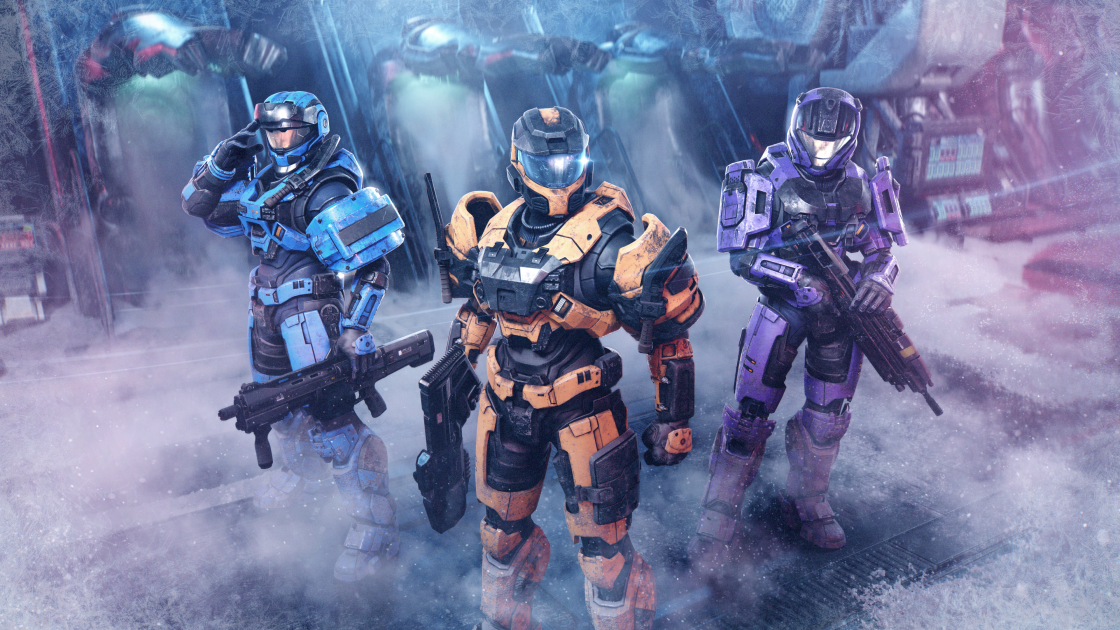
In early December, 343 moved up its planned release of a custom game browser by several months, making it possible for players to join games played on custom Forge maps with ease. It also added a remake of popular Halo 3 map The Pit made in Forge.
In a reversal of the heavily criticized cosmetic options available at launch, 343 made all of the Spartan armor cores (key pieces of the customization system) free to all players, alongside 10 color options.
I wish this had been the game Halo Infinite launched as. Imagine a version of this comeback story where Infinite launched with Forge and a progression system that prioritizes just playing Halo, and one month later players got an early version of a custom game browser to play community maps. Sure, the six month wait to the second season would still annoy some people—but the rest of us could've hopped into some classic CTF on a fan-made Blood Gulch to pass the time.
Building a smoothly updating, constantly engaging live service game is like climbing a mountain. Despite 343 Industries' best efforts, Halo Infinite spent much of its first year burrowing down instead, losing players who expected much more, and much faster. Now after 13 months Halo's finally returned to level ground, with a tailwind of enthusiasm from Forge and an accumulation of improvements big and small. It still feels far, far behind other live service games, and it's going to take a long time to get there. But if 343 can deliver on its goals by the end of next year, we might have finally reached a vantage point from which 10 years of Halo Infinite looks like an exciting journey.

Wes has been covering games and hardware for more than 10 years, first at tech sites like The Wirecutter and Tested before joining the PC Gamer team in 2014. Wes plays a little bit of everything, but he'll always jump at the chance to cover emulation and Japanese games.
When he's not obsessively optimizing and re-optimizing a tangle of conveyor belts in Satisfactory (it's really becoming a problem), he's probably playing a 20-year-old Final Fantasy or some opaque ASCII roguelike. With a focus on writing and editing features, he seeks out personal stories and in-depth histories from the corners of PC gaming and its niche communities. 50% pizza by volume (deep dish, to be specific).

